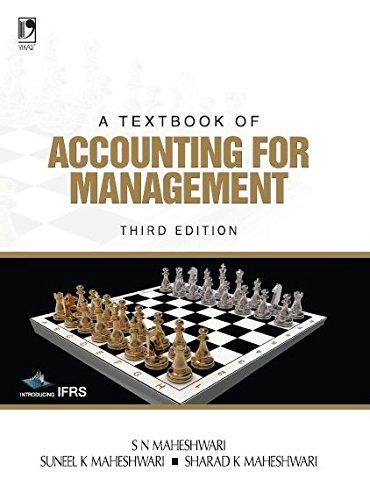Question
Give answers to within closest penny or hundredth percent (e.g. i = 7.25% or 0.79%). Equivalence 1: A sum of money Q will be received
- Give answers to within closest penny or hundredth percent (e.g. i = 7.25% or 0.79%).
Equivalence
1: A sum of money Q will be received 5 years from now. At 3% annual interest, the present worth of Q is $1500. At the same interest rate, what will be the value of Q in 15 years? <6 pts>
Reasoning/Work:
2: How much must you invest now at 3.25% interest to accumulate $150,000 in 10 years?
Note: Do not use interest tables for this problem. Use Excel financial functions, a financial calculator, or a financial (i.e. TVM) formula. <8 pts>
Reasoning/Work:
3: Fourteen thousand dollars is borrowed for one year at an interest rate of 0.75% per month. If the same sum of money could be borrowed for the same period at an interest rate of 6% per year, how much could be
saved in interest charges? <10 pts>
Reasoning/Work:
4: An R&D lab will receive $600,000 when a proposed contract is signed today, a $250,000 progress payment at the end of year 1, and $300,000 when the work is completed at the end of year 3. What is the present worth of the contract at 4.12% interest rate? <10 pts>
Reasoning/Work:
Nominal and Effective Interest Rates
5: A rm charges its customers 4.33% interest semiannually. What is the effective interest rate? <8 pts>
Reasoning/Work:
Continuous Compounding
6: In 1683, Jacob Bernoulli was the first person to calculate interest based on continuous compounding. While this is a well-known fact, a much lesser-known fact is that he then deposited the equivalent of $565 into a Swiss bank at 3.33% nominal interest rate, compounded continuously. Yes, he did have to explain the continuous concept to the banker. This was not difficult since the banker was his brother, who also was a mathematical genius (as all Bernoullis were). Jacob left the money in the bank with the instruction that no money would ever be withdrawn from it by his estate, unless hell froze over. Since most scientists agree that hell has never frozen over, what is the current value of this bank account after 337 years of Jacobs deposit. <8 pts>
Reasoning/Work:
Step by Step Solution
There are 3 Steps involved in it
Step: 1

Get Instant Access to Expert-Tailored Solutions
See step-by-step solutions with expert insights and AI powered tools for academic success
Step: 2

Step: 3

Ace Your Homework with AI
Get the answers you need in no time with our AI-driven, step-by-step assistance
Get Started


